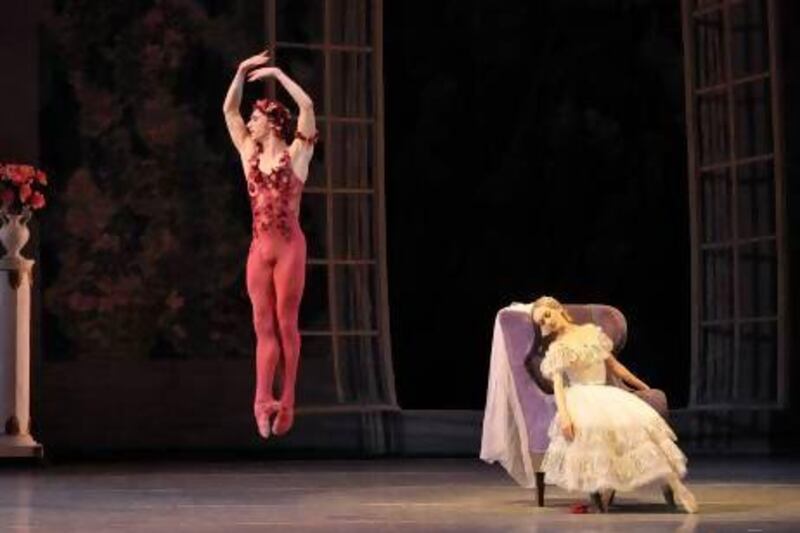"The Mariinsky Ballet is coming to town" - these words alone are enough to induce hysteria in the average ballet fan. Famous for its elegance, athleticism, brilliant ensemble work and incredible poise, St Petersburg's Mariinsky - still often known by its Soviet name, the Kirov Ballet - is one of history's greatest dance companies. And yes, the company finally arrives in Abu Dhabi on Thursday, performing something unique - four short ballets created by the iconic choreographer and Mariinsky alumnus Michel Fokine. For Mariinsky first-timers, here's what you need to know about the choreographer and his ballets before the show.
The father of modern ballet
A Petersburg native, Fokine graduated from the Mariinsky Ballet Academy in 1898 and started a career that tore up the ballet rule book. Trained traditionally, he'd quickly become convinced that classical ballet needed an overhaul, that its performances were getting stale, hung-up on look-at-me antics and running low on real feeling. As a teacher and choreographer, Fokine pushed ballet towards bolder, more expressive forms that brought it closer to drama and opera.
He insisted, for example, that choreography designers create steps from scratch for each new dramatic scenario, instead of repeating pre-learnt steps ad infinitum - an obvious point today, but nonetheless bold in its time. He also vowed to strip mime from ballet so that steps never looked like prettified versions of everyday actions, but instead created an alternative expressive language. He rejected using ensemble dancers as a mere decorative backdrop to soloists and insisted productions give music, costume and set design equal weight with dancing.
Taken altogether, these ideas push ballet further towards being a total dramatic form, using every means at its disposal to create an intense, meaningful effect on the audience. Fokine is often called the "father of modern ballet", which makes perfect sense - the ensemble focus that dance has today stems from him, as does the emphasis on dramatic expressiveness (sometimes) at the expense of elegance. That said, it's not necessarily Fokine's radicalism that strikes viewers now. Still soaked in ballet tradition, his work has a timeless grace that seems almost classical today.
The Dying Swan
Created for the legendary ballerina Anna Pavlova, this short Fokine ballet raised eyebrows when it premièred in 1905. Expressive and dramatic, it took the spotlight off leaps and pirouettes to focus on the upper body. Matched with sweet, sad music by Saint-Saëns, its portrayal of a swan's death might seem melodramatic to modern eyes, but the dance's wing-like arm movements are still an influence on classical ballet, especially on performances of Swan Lake. Rarely seen beyond a flickering, silent 1925 film version with Pavlova, the Mariinsky's revival for its Abu Dhabi performance should be a real treat.
Scheherazade
This ballet's fascination with all things Middle Eastern proved such a hit with Paris's upper crust in 1910 that fashion designers started copying its costumes. Set to the Russian composer Rimsky-Korsakov's 1888 symphonic suite, it's a musically vital piece, full of colour and subtle eroticism that nonetheless (as is so often the case) reflect its creators' fantasies more that the world of the original 1001 Nights.
Chopiniana
Better known by the later name Les Sylphides, Chopiniana was the first truly plotless ballet ever staged. Fokine, obsessed with freeing dance from mime, stripped this work entirely of storyline, leaving just white-clad performers dancing on a moonlit stage. While the piece's abstraction might be groundbreaking, there's actually something delicately timeless and almost old fashioned about the piece. With Chopin's exquisite music (arranged for orchestra by Alexander Glazunov) and a dance vocabulary of demure, elegant steps, it's a nostalgic work that looks longingly to the romantic period.
Le Spectre de la Rose
At last - a real show-stopper for a male dancer. In a genre where ballerinas often get the best moves, this short ballet celebrates the male soloist. A debutante falls asleep after her first ball with a rose in her hand - the flower springing to life as a male dancer the moment she closes her eyes. A dancing flower might not sound like any dancer's dream role, but Fokine's steps bring it brilliantly to life, making a skilful dancer seem simultaneously weightless and athletic.
The Mariinsky Ballet performs at 8pm on Thursday and Friday at the Emirates Palace. For more information, visit www.abudhabifestival.ae
Follow us
[ @LifeNationalUAE ]





